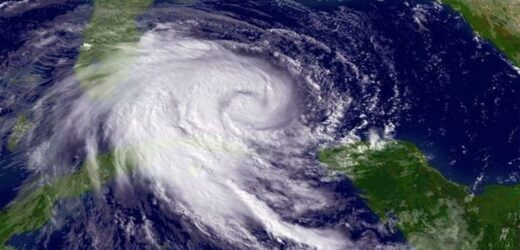Hurricane Ida intensifying over the gulf of Mexico
We use your sign-up to provide content in ways you’ve consented to and to improve our understanding of you. This may include adverts from us and 3rd parties based on our understanding. You can unsubscribe at any time. More info
Climate change poses a catalogue of risks to the planet. Human-induced warming will make parts of the world uninhabitable, and vital crops may become extinct. Insects will disappear and disrupt the food chain from the bottom up, all leading to catastrophic change for humans.
Another aspect of the climate crisis is the increased instance of natural disasters, with one of the most serious problems being rising sea temperatures.
Warmer oceans mean rising sea levels, melting ice caps and more extreme weather events, among them hurricanes.
Now, however, a Norwegian company claims to have discovered a way to mitigate the rise of destructive hurricanes: by blowing bubbles.
OceanTherm, founded by Olav Hollingsæter, a former naval officer, is developing a system that uses bubbles to cool the surface temperature of the sea by drawing up cold water from the oceans’ depths.


Hurricanes are created when hot and cold air meet over warm ocean waters of 26.5°C or above.
The warmer the water, the more powerful a hurricane can become, as seen in recent devastating cyclones in years past.
But water below 26.5°C has neither the heat nor sufficient levels of evaporation to feed a hurricane.
This will either reduce the strength of the storm — and chances of making landfall — or prevent one forming in the first place.
JUST IN: Power outage warning: ‘Big solar flare heading to Earth’

OceanTherm’s idea is to lower perforated pipes deep into the ocean through which to blow compressed air.
The air would create bubbles that would draw cooler water up to the surface and reduce its temperature to below 26.5°C.
The pipes would be deposed from a fleet of ships patrolling areas known to form hurricanes, places like the Gulf of Mexico.
They would then create a “bubble curtain” in a hurricane’s path to diminish it, potentially “stopping them in their tracks”, according to BBC Science Focus magazine.
And yet, the idea is an old one, with OceanTherm simply applying a new technique.
DON’T MISS
Macron leads rebellion as EU nations form alliance against Gemany [REPORT]
Scientists baffled by radio waves coming from Milky Way centre [INSIGHT]
Russia sends terrifying threat as millions of Britons face winter cris [ANALYSIS]


Norway has been using bubble curtains for years to prevent fjords from freezing in the winter.
But in this case the bubbles bring warmer water to a surface that’s being chilled by cold winter air.
The company’s proposal has yet to be tested on a hurricane, and Hollingsæter admits a lot of research and development is needed to make it viable.
Many believe the task is not even possible.
Bill McGuire, Emeritus Professor of Earth Sciences at University College London, told Science Focus: “There’s a huge difference between keeping a fjord from icing over and weakening a tropical cyclone with the power of several thousand nuclear bombs and up to a thousand kilometres, or more, across.”


The practicalities and cost will be a huge factor.
Its estimated bill comes out at around $500million (£366m) to set up and $80m (£58m) a year to run.
However, this is balanced out when the cost of a hurricane — $54billion (£40bn) annually according to the US Government’s Congressional Budget Office — is taken into consideration.
And, there are cheaper alternatives.

Professor McGuire said: “The way to mitigate the effects of a landfalling hurricane is via better forecasting, improved land-use planning, more resilient construction, local engineering solutions, and improved alert and evacuation systems.
“And slashing emissions so that an overheating climate and ocean don’t drive more powerful and wetter storms.”
Other methods include a seafloor scanner, vibration barriers and snow drift monitoring.
You can subscribe to BBC Science Focus magazine here.
Source: Read Full Article


